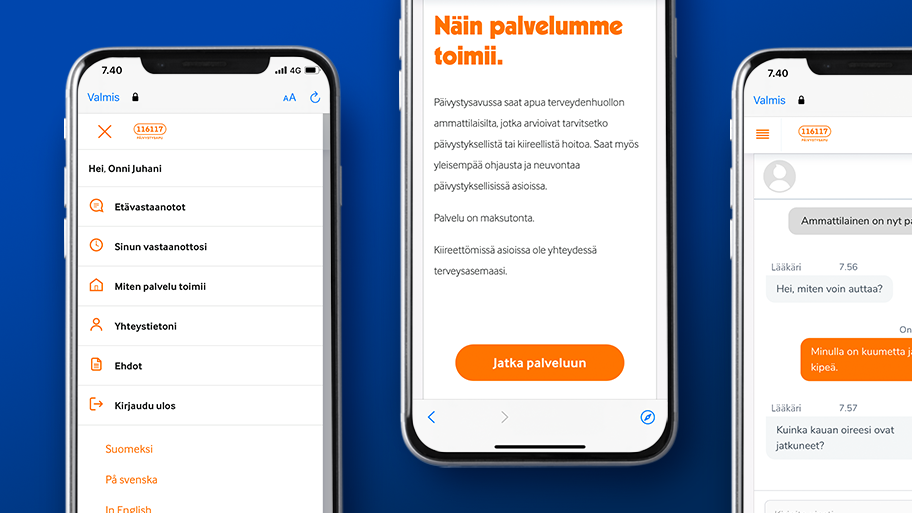Remote services reduce unnecessary emergency department visits in North Ostrobothnia
Terveystalo's professionals respond to the North Ostrobothnia Hospital District's Päivystysapu 116117 helpline chats and calls in as quickly as ten seconds. Remote assistance reduces unnecessary visits to the emergency room.

Päivystysapu helpline has been customized with the colors and logo of the North Ostrobothnia Hospital District. Therefore, a person using the service probably will not even realize that they are using a Terveystalo service.
Terveystalo has provided the North Ostrobothnia Hospital District (PPSHP) with the Päivystysapu 116117 helpline service from the beginning of 2022. At the same time, new features were added to the service to complement the call service: an Omaolo assessment and chat, which operates on a digital platform developed by Terveystalo.
Päivystysapu 116117 is a nationwide advice and guidance service organized by the hospital districts and staffed by health professionals around the clock. The service provides advice on sudden health problems when the local health center is closed.
On average, a call or chat is answered in ten seconds.
"In the past, it sometimes took us a long time to call back to customers. Customers have been surprised at how quickly calls and chat are now answered. They have also praised our flexibility," says Matti Martikainen, Director of the Emergency Center at Oulu University Hospital.
Thanks to the service, less than 30% of contacts result in an actual visit to the emergency room. Over the phone or in a chat, a professional is able to decide whether a patient needs immediate treatment or whether they should visit a health center during opening hours. This places demands on social and health professionals working in the remote service.
"The respondents are experienced professionals at Terveystalo who are able to decide remotely whether a customer's concern requires a physical meeting with a doctor or nurse. They also have thorough knowledge of the service system in our region," Martikainen adds.
The use of remote services should be promoted
More than 400,000 people live in the North Ostrobothnia Hospital District, half of them in Oulu. Geographically, the area is large: it stretches from Kuusamo to Kalajoki. The rural areas are sparsely populated, with an ageing population and sometimes long distances to healthcare units. There is still work to be done on the deployment of remote services.
"We need to activate people to use the Omaolo assessment more. It allows you to self-assess a single symptom or health problem and find a way to deal with it. This is wise use of scarce resources," says Martikainen.
Another example of the wise use of resources, in Martikainen's opinion, is that the hospital district receives more accurate statistics through Terveystalo's digital platform than before. The statistics give an idea of the problems people have and the help they need.
North Ostrobothnia's wellbeing services county will be one of the largest in Finland. Director Martikainen, a specialist in acute medicine and anesthesiology, expects the service system to be comprehensive and for citizens to get the help they need immediately.
"Online resources should be utilized as much as possible, but access to local services is still the be-all and end-all," Martikainen adds.
Terveystalo's services meet all the healthcare needs of the public sector – to the desired extent, flexibly and cost-effectively.